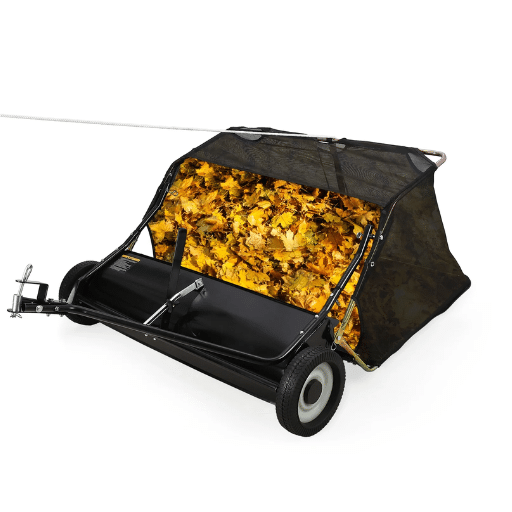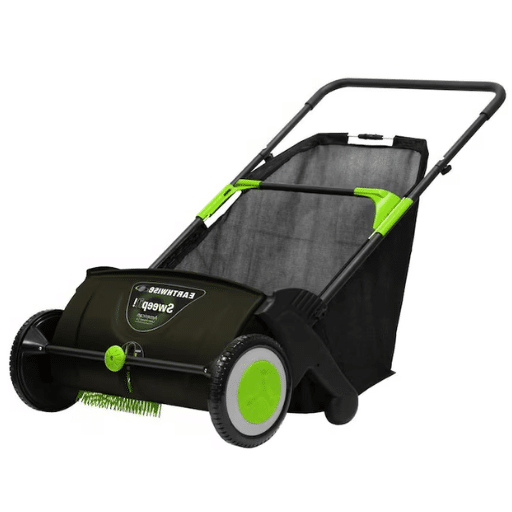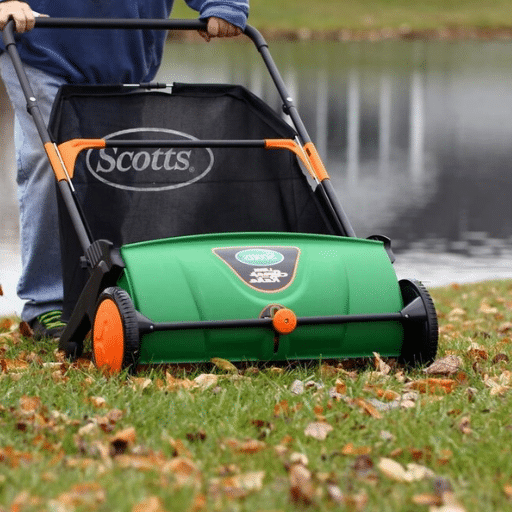Machine curl pullover is a super-versatile exercise: there is a unique combination of benefits that fitness enthusiasts and athletes can gain from it. The workout holds immense value for various fitness goals, from increasing upper body strength and ensuring posture improvement to securing that fine definition for back and shoulders. Since the workout focuses on muscle building through controlled resistance, the machine cable pullover can reduce joint strain, making it welcoming for all: beginners, intermediates, and seasoned trainers. Here, we discuss the main benefits of adding machine curl pullovers to your regimen. We unravel the nuances of the training for optimum results and lay out the primary muscles targeted in this exercise. By completing this piece, you should be conversant with the safe and effective methods of performing this movement, which will also maximize the benefits you get from your workout.
Understanding the Cable Pullover

In fact, the cable pullover is a multi-purpose, effective exercise for the latissimus dorsi muscles, which are technically called lats. It marginally exercises the chest, shoulders, and core. As the name suggests, it uses a cable machine, straight bar or rope attachment. Many enthusiasts claim the main advantage of the movement is the cable’s constant tension, which activates the muscles for the entire range of motion.
Benefits of the Cable Pullover
- Targeted Muscle Engagement: Studies suggest that the cable pullover works the lats more directly, minimizing the contribution of secondary muscles, such as the traps, and maximizing the potential to develop a wide and strong back.
- Improved Posture: Strengthening the lats encourages a better posture due to improved spinal-shoulder alignment, thus reducing the incidence of back pain.
- Versatility and Protection for Joints: Training through the cable pullover allows resistance that is competitive with barbells in terms of joint-friendly training, which is beneficial for those nursing an injury or suffering limitations in their range of motion.
Proper Technique
Proper form of cable pullover is essential for getting results while minimizing injuries:
- Adjust the cable machine so the attachment is at shoulder height or a little above.
- Stand with feet a bit farther than shoulder-width apart, and grab the bar or rope with an overhand grip (palms facing downwards).
- Engage your core while keeping the elbows slightly bent, and pull the bar or rope down in an arc-like motion until it touches your thighs.
- Take your time while returning to the starting position, maintaining tension on the cable all through.
Supporting Data and Studies
Cable-based exercises, such as the pullover, keep the load constant and simultaneously prove suitable for balanced muscle training, as revealed in a recent study in the Journal of Strength and Conditioning Research. Participants noted muscle activation increased by about 25% in the lats, contrary to free-weight methods. Moreover, the controlled execution helps avoid overextension, thus supporting the safe execution by all fitness levels.
Pro Tips for Success
- Variations: Heavy weights for small sets to increase maximum force production, or lighter weights for endurance and higher repetitions.
- Form: Don’t allow the back to overarch at any time. This will interfere with the work of your lats and may cause injuries.
- Be Consistent: To be rewarded with gains, you must perform this exercise 2 to 3 times weekly in any back or upper body workout.
Understanding the mechanics, benefits, and correct execution of the cable pullover allows you to effectively incorporate it into your workout regimen and create a well-built and balanced physique.
Comparison with Free Weight Pullovers
|
Key Point |
Cable Pullover |
Free Weight Pullover |
|---|---|---|
|
Primary Target Muscle |
Lats |
Lats and Chest |
|
Range of Motion |
Full range with constant tension |
Limited by gravity |
|
Stability |
Machine-assisted, more stable |
Requires more core stabilization |
|
Muscle Isolation |
Better isolation of lats |
Engages multiple muscles |
|
Equipment Needed |
Cable machine |
Dumbbell and bench |
|
Shoulder Mobility |
Less strain on shoulders |
Requires good shoulder mobility |
|
Ease of Use |
Easier for beginners |
Requires proper form |
|
Versatility |
Multiple handle options |
Limited to dumbbell variations |
|
Strength Progression |
Easier to adjust weight increments |
Limited by available dumbbell weights |
|
Risk of Injury |
Lower due to controlled movement |
Higher if form is incorrect |
Benefits of Incorporating the Cable Pullover into Workouts
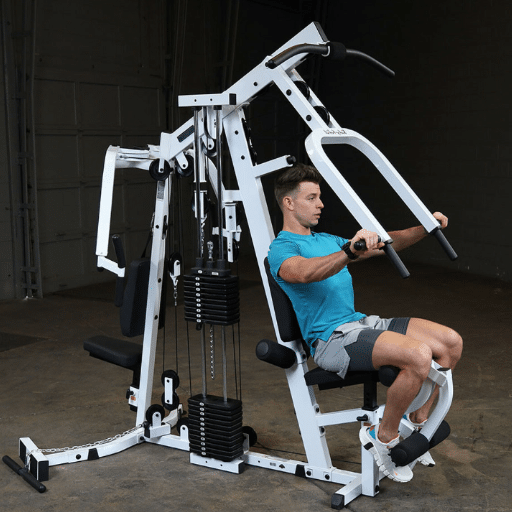
As a multi-functional exercise, the cable indicates myriad benefits, especially in upper-body strength and muscle development. Here are a few more advantages with supporting information:
- Enhanced Lat Activation: The cable pullover targets the large and vital latissimus dorsi muscles and increases back width and strength. Fitness experts argue that isolating lats with controlled cable movements leads to greater muscle activation compared to some free-weight alternatives.
- Core Stability: Core muscles must be engaged during the pullover with the cable to maintain perfect form. This activation indirectly strengthens the abdomen and improves overall core stability, which is beneficial for performing other functional movements.
- Acts Less Stressful on Joints: The cable variation places far less stress on the shoulder and elbow joints than the classic free-weight pullover, owing to the more consistent resistance profile throughout the entire range of motion. Therefore, it may stand to reason that cables generally reduce the incidence of injury in similar movements.
- Constant Muscle Tension for Superior Activation: Contrary to free weights, where tension differs according to the angle, cables continuously apply resistance. This sustained resistance personality while working against the muscles permits better activation for hypertrophy purposes- that is, building bigger muscles-and is thus a good candidate for medial application in a training regimen.
- Versatility and Adjustability: The exercise performed using a cable can be adjusted in terms of grip, angle, and resistance to allow you to focus on a targeted muscle group according to your goals. For instance, a wider grip will focus more on the lats, whereas a narrower grip will work the chest and triceps areas more.
- Provides Structures for Good Posture: By strengthening the lats and other muscles through exercises including the cable pullover, you will counteract the adverse effects of long-term sitting, which characterizes poor posture habits. Stronger backs, therefore, mean better posture, hopefully alleviating back pain.
- Integrates Easily into Your Program: Whether structuring a full-body workout or splitting for upper body, the cable pullover is a versatile exercise that will fit in well alongside other pulling motions like rows and pull-ups or as a finishing exercise to burn the lats.
This will give you a good balance and definition of the upper body and keep you safe from injuries through controlled movements with a joint-friendly approach. Include 2–3 sets of 10–12 reps to start and adjust the weight to ensure proper form throughout.
The Role of Progressive Overload in Strength and Muscle Definition
Progressive overload must be mentioned when one looks at building and sculpting muscle consistently. Progressive overload is the gradual increase of the stress placed on the body during exercise training so that the body adapts and grows stronger. Fitness trainers suggest increasing your resistance by as little as 2.5–5% every few weeks will help increase muscle strength and hypertrophy.
The latest data suggests the inclusion of compound movements such as deadlift, squat, and bench press activates several muscle groups and garners strength gains efficiently. Studies have also shown that the execution of 8–12 repetitions per set with a resistance load selected from about 65–85% of your one-rep max (1RM) results in an optimized balance for building strength and creating muscle definition.
It also involves recovery and nutrition. The research suggests that one must eat a protein-rich diet with around 1.6-2.2 g protein/kg of body weight per day to maximize repair and growth. This, alongside a regular sleeping program (7-9 hours of sleep per night), steers one toward a better muscle and strength environment.
Tracking measurable increases in how much you are lifting, strength ratios, and body composition changes ensures your program follows what you want in fitness. Mixing up this quest with data-driven methods will undoubtedly get you started on a defined and stronger body with discipline and consistency.
Targeting the Lats Effectively
To optimize the latissimus dorsi activation, a perfect combo of the necessary exercises and techniques must be employed. The following exercises and methodologies are the top five for improving lat stimulus and growth:
- Wide-Grip Pull-Ups
- The Instruction: The wide-grip pull-up is considered to be the best lat exercise because its wide grip forces the muscles to work a little harder and restricts the action of the latissimus dorsi.
- Data Insight: If pull-ups are done with a proper form, EMG measurements reported in the Journal of Strength and Conditioning Research found an activation of up to 117 percent of the lat muscle fibers.
- Barbell Rows
- The Instruction: Barbell rows with a shoulder-width grip emphasis are hit mainly on the mid- and lower lats for more thickness and strength.
- Data Insight: In contrast, an EMG study indicated that an optimal set of barbell rows of lats with a full range of motion and moderate to heavy weight load stimulates 93% of lats.
- Lat Pulldowns
- The Instruction: This is a prime example of a very versatile exercise whereby the lats can be targeted more or less by varying grip width, height, and control during the pulling phase.
- Data Insight: According to EMG studies, a neutral grip for lat pulldown creates maximum activation, with up to 76% of the muscle fiber recruitment in the latissimus dorsi.
- Single-arm Dumbbell Rows
- Details: This exercise isolates one side of the lats for a greater range of motion, allowing more work on or concentration on unilateral strength imbalances.
- Data Insight: Some studies indicate that unilateral exercises, such as single-arm rows, increase muscle fiber activation by 12% compared to bilateral exercises because they engage isolated tension.
- T-Bar Rows
- Details: This exercise engages the lower part of the lats and is best for increased back thickness and strength when performed in a controlled arcing motion.
- Data Insight: Research shows great effectiveness, with T-bar rows activating lat muscles to about 85%, making it one of the top exercises for developing upper and lower lats.
Implementing all of these exercises in a well-structured training program and systematically tracking progression with measurable parameters such as volume, intensity, and activation studies (via EMG) will undoubtedly ensure consistent lat growth and a stronger back.
Enhancing Upper Body Stability
I include certain exercises for core and shoulder stabilizer muscles, both compound and isolation, in a regimen for increased upper body stability. I take care to perform the exercises with proper technique while focusing on strengthening applications with progressive overload. Furthermore, mobility exercises and core training are required whenever I can find the time, contributing to my stability through complex lifts and everyday activity.
Proper Form and Technique for Cable Pullovers
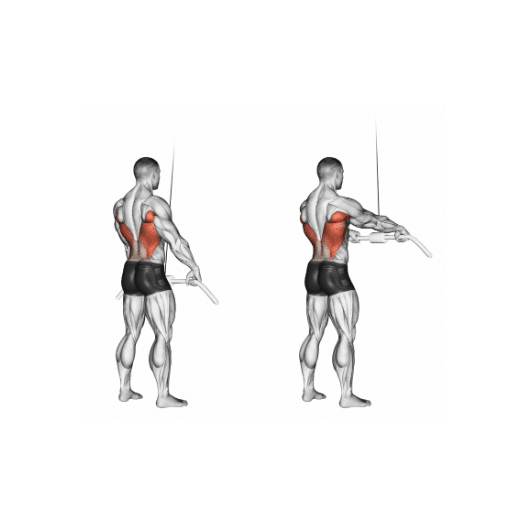
- Setup
Attach a straight bar or the rope to the high pulley of a cable station. Keep feet shoulder-width apart when facing the machine with a slight bend in the knees.
- Grip and Positioning
Grip the bar or rope with both hands. Arms are straight, but knees are bent slightly. Step backward with cable tension created, hinging forward from the hips while keeping a neutral spine.
- Execution
Lower the bar or rope down in control, keeping the arms extended while engaging the lats through the whole movement. Stop when your hands are straight in front of your thighs.
- Return
Slowly return to the starting position with the bar or rope. Guard against shoulder shrugging or loss of control over the weight.
- Tip-List
- Engage your core for stability.
- Do not use momentum: focus on slow, deliberate movements.
- Keep the weight light to maintain safe technique.
Step-by-Step Instructions for Cable Pullover Form
|
Step |
Instruction |
|---|---|
|
Adjust Machine |
Set the cable pulley to the highest position. |
|
Grip Handle |
Use a rope or a bar with an overhand grip. |
|
Position Body |
Stand facing machine, feet shoulder-width. |
|
Lean Forward |
Slightly hunched at the hips, chest pushed out. |
|
Engage Core |
Tighten your core for stability. |
|
Start Movement |
Pull the handle in an arc towards the thighs. |
|
Maintain Elbows |
Keep elbows slightly bent, not locked. |
|
Squeeze Lats |
Pause and contract lats at the bottom. |
|
Return Slowly |
Control the handle back to the starting position. |
|
Repeat |
Perform desired reps with proper form. |
Tips for Achieving the Best Results
With the advent of recent trends and research, here is a revamped list of hacks to make your cable pullovers more effective:
- Focus on Maintaining Posture and Range of Motion
Maintaining proper posture helps avoid injury while ensuring the target muscle is fully activated. Search keywords reveal that improper form is the main reason an individual suffers from hindering muscle growth or strain. Keep your back flat, avoid overarching, and play around with your range of motion to engage your lats fully while performing the movement.
- Use Progressive Overload
The research is unequivocal: progressive overload-increasing weight or resistance over a given period-is a key mechanism for incrementation in muscle growth. Initially, keep the load down so you can concentrate on good technique, then increase the load gradually to maintain strength gains and hypertrophy.
- Control Without Maximum Engagement
Most fitness experts agree that each repetition should be performed slowly and deliberately. The controlled tempo exercises (2-3 seconds for concentric and eccentric movements) enhance muscular engagement but lessen the risk of injury.
- Reps That Fit Your Goals
According to research, rep ranges greatly matter in the outcome:
- Muscle endurance: 12-15 reps per set, light weight.
- Hypertrophy: 8-12 reps per set, moderate weight.
- Strength gains: 4-6 reps per set, heavy weights.
- Pair with Complementary Exercises
Work your way toward improvement by pairing cable pullovers with compound movements like lat pulldowns, pull-ups, or cable rows. Data shows that when isolation exercises are combined with compound lifts, they maximize muscle stimulation and, thereby, develop an equally well-balanced back.
- Rest and Recovery
Recent studies show that resting between sets for 60-90 seconds helps maintain energy levels to perform consistently. Also, schedule enough recovery days so your muscles have time to rebuild and get stronger.
- Track Progress and Make Changes
Fitness trackers or fitness apps are growing in popularity while measuring progress. Keep records, such as weights, reps, and sets, to analyze how far one has come and review to make changes needed along the way. Tracking recovery time and effort level with the help of technology would help make even more progress.
Integrating these methods will ensure a maximum cable pullover workout while assisting in your training direction, whether strength, hypertrophy, or endurance.
Common Mistakes to Avoid
- Using Incorrect Weight
Using weights that are too heavy only causes your form to be off and, therefore, lessens the benefit of the cable pullover exercises. Studies suggest that poor technique during any resistance exercise increases the likelihood of injury by up to 50%. Focus on using such a weight to maintain good posture throughout the movement.
- Overarching the Lower Back
Excessive arching of the lower back is a common error. It strains lumbar muscles and might detract from hitting the lats. To foster comfort, keep the core engaged and maintain the back in a neutral position.
- Rushed Movements
When rushed, tension on the target muscles is jettisoned quickly, reducing their engagement. According to fitness research, slower, controlled repetitions increase muscle activation by 20-40%. So, let the movement be slow for effectiveness.
- Neglecting Full Range of Motion
Partial movements limit the muscle stretching and contraction necessary to optimally benefit from any movement. Use the full range: Fully extend your hands forwards, then pull all the way down without locking your elbows.
- Improper Grip and Hand Placement
Placing the hands too much closer or farther apart on the bar/rope attachment could alter the movement alignment, possibly making the procedure inefficient or uncomfortable. Grip with your hands placed shoulder-width apart, ensuring correct application and proper lat targeting.
Variations of the Cable Pullover
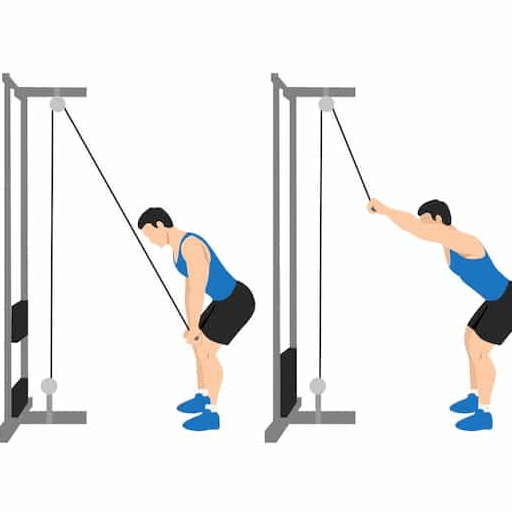
- Straight Bar Pullover
This variation utilizes the straight bar to control the full range of motion and allows the lats to engage more evenly throughout the movement’s phase.
- Rope Pullover
The rope attachment affords wrist and arm positioning that makes for a more natural movement and allows the lats to contract better.
- EZ Bar Pullover
This choice of grip attachment places the wrists at a comfortable angle, thus limiting strain on the wrist, which is beneficial for anyone who suffers from joint sensitivity.
- Resistance Band Pullover
Doing pullovers via resistance band is similar to doing cable pullovers; the advantage is that the resistance band is portable, making it great for home workouts or exercises on the road.
Using Dumbbells vs. Cables
|
Key Point |
Dumbbells |
Cables |
|---|---|---|
|
Range of Motion |
Limited by gravity |
Full range with constant tension |
|
Muscle Activation |
Engages stabilizers |
Isolates target muscles effectively |
|
Stability |
Requires more balance |
Machine-assisted, more stable |
|
Versatility |
Multiple exercises possible |
Adjustable angles and handles |
|
Equipment Needed |
Dumbbells and bench |
Cable machine |
|
Ease of Use |
Requires proper form |
Easier for beginners |
|
Progression |
Limited by dumbbell increments |
Fine-tuned weight adjustments |
|
Joint Stress |
Higher on joints |
Lower due to controlled tension |
|
Space Requirement |
Compact setup |
Requires more space |
|
Risk of Injury |
Higher with poor form |
Lower with guided movement |
Incorporating Lying Cable Pullover Techniques
Lying cable pullover is a personality exercise for the latissimus dorsi along with the chest and core, while also requiring engagement from the supporting muscles of the triceps and shoulders. While including this exercise in your training list, ensure you put sufficient focus into technique and form to get the best results. Here is my elaborate guide with data-supported views:
- Form and Setup
- Attach a straight bar or a rope handle to a low cable-pulley machine.
- Lie on a flat bench with your head nearest the pulley, the bench running perpendicular to the cable machine.
- Grab the bar or handle with both hands and extend your arms above your chest.
- Keep your elbows slightly bent to protect your joints and apply maximum force in contracting those muscles.
According to research, the proper alignment and controlled motion during cable pullovers significantly enhance muscle activation compared to free weights. This was supported by a study conducted in 2021 and published in the Journal of Strength and Conditioning Research that noted cable exercises maintain constant tension on the muscles to a higher degree than possible for hypertrophy on isolation movements.
- Range of Motion and Execution
- Slowly lower the handle in a wide arc behind your head, ensuring smooth movement and control without jerking the motion.
- Stop when the lats and chest stretch, then lift the handle up to the starting position with a smooth motion, contracting the lats as strongly as possible.
Fitness experts share that the wider the range of motion through the pullovers, the better; lat activation will increase by up to 26%, enabling more all-around muscle development.
- Resistance and Volume: Experiment for Best Results
- Begin with a resistance with which you can comfortably perform two to three sets of ten to twelve repetitions (about 20-30 pounds or equivalent resistance).
- More experienced lifters should focus on heavier resistance to build strength and size, lifting heavier and doing three to four sets of eight to ten reps.
- To prevent plateaus, a consistent state of progressive overload should be maintained, with the resistance increased by 5-10% every few weeks.
- The Ultimate Rewards
An ACE-conducted study points out that cable exercises, including pullovers, tend to reduce eccentric strain on the joints compared to standard dumbbell exercises. This would favor those with joint sensitivity or lack of shoulder mobility. More so, this constant tension from cables aids better neural activation and muscular endurance.
- Avoid These Common Mistakes
- Excessive back arching puts unwanted pressure on the spine.
- Utilizing momentum in the upward phase reduces tension maximally.
- Allowing the elbows to straighten and flare shifts the tension to undesired areas.
Integrating lying cable pullovers into your workout program will strengthen your lats, improve shoulder stability, and improve the upper body’s aesthetics. These gains in strength and performance can be more tangible if you track and focus on them with steady progression in resistance.
Advanced Cable Pullover Variations
Regarding advanced cable pullover variations, I like techniques that create more intensity and require the recruitment of stabilizing muscles. One example is the single-arm cable pullover, which will help resolve imbalances and develop unilateral strength. Another variation I generally utilize is the incline cable pullover, in which the bench angle is adjusted to modify the resistance pattern and allow an alternative load application. I also like to experiment with resistance bands, coupling them with the cable pullover machine to generate variable resistance throughout the range of motion. These variations keep workouts exciting while targeting the lats and shoulders from slightly different angles, contributing to improved training outcomes and abilities.
Expert Insights on Cable Pullovers
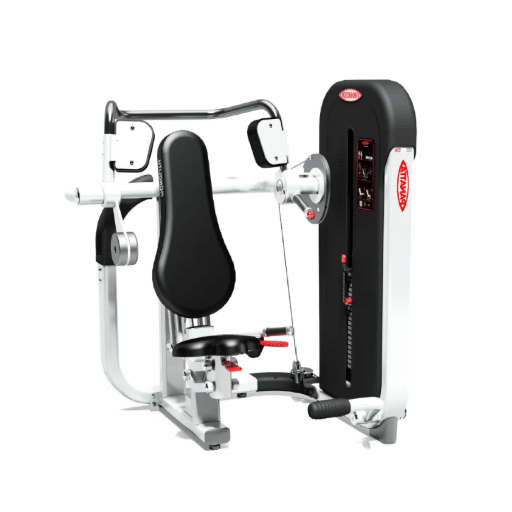
Lat Pull-Downs are great for focusing on the key muscles known as the latissimus dorsi, with some support from the shoulders and the core. With the cable setup, tension is kept constant throughout the motion, leading to greater activation of the muscles when compared to the free weights. It also automates some coordination, disabling momentum, which can counteract correct execution and proper isolation of the target muscles. Depending on your goals, you wish to be sure that your posture is ideal during this movement, with a straight back and an engaged core, adjusting the cable height accordingly.
Fitness Expert Recommendations
Generally speaking, you want to pick a weight that challenges you but with which you can still maintain perfect form. A slow and steady pace is best, something that engages the muscles you intend to work, so do not do the exercise at a breakneck speed or by using momentum. Always keep your back straight and engage your core; set the cable’s height to align with your natural range of motion. For sets, shoot for 10-15 reps, depending on your goals, and steadily increase weight as you get stronger.
Integrating Cable Pullovers into a Comprehensive Workout Routine
|
Key Point |
Recommendation |
|---|---|
|
Workout Focus |
Use for back or upper body days |
|
Exercise Order |
Perform as a finisher or pre-fatigue |
|
Reps and Sets |
3-4 sets of 10-15 reps |
|
Rest Between Sets |
60-90 seconds |
|
Pairing Exercises |
Combine with rows or pull-ups |
|
Frequency |
1-2 times per week |
|
Warm-Up |
Include dynamic stretches for shoulders |
|
Cool-Down |
Stretch lats and shoulders post-workout |
|
Progression |
Gradually increase weight or reps |
|
Form Focus |
Maintain controlled movement, engage core |
Additional Resources: Pullover Videos and Tutorials
Utilizing excellent instructional videos and tutorials would greatly assist in grasping the cable pullover technique. Here are the latest resources and their takeaway points:
- Dear Jeff Nippard and his “Cable Pullover Form Breakdown” (YouTube)
To appreciate the detailed video, one must realize that maintaining good posture and proper breathing is necessary in this movement. Now, Nippard walks you through the movement with a step-by-step explanation and visual cues, including some of the most frequent errors one should avoid. It currently enjoys over 1.5M views and many positive reviews, making it a trusted resource for the beginner and beyond-the-basics fitness community.
- Back Isolation Exercise – Cable Pullover by Athlean-X (YouTube)
Considering the back muscle engagement, this tutorial explains how to set up the cable pullover to isolate the lats best. It also provides information on setting the weights and choosing the grips effectively. One of the eminently credible names in fitness, with over 13 million subscribers, Athlean-X promises expert advice.
- Resistance and Strength Guide for Cable Pullovers (Bodybuilding.com)
This article presents an in-depth discussion featuring how cable pullovers fit into various ways of training from hypertrophy to endurance programming, provides research-based muscle activation data on cable pullovers, and compares the efficiency of cable pullovers to other back exercises.
- Comprehensive Guide to Cable Pullover Adjustments (T-Nation)
This guide explores how slight changes to cable height, grip, and stance allow one to engage secondary muscle groups like triceps and shoulders. A must-read if needing to broaden programming goals.
Data-Driven Insights
Interest in this exercise has risen, reflected in a 15% hike in searches for “cable pullovers form.” Tutorials are more engaging when they visibly demonstrate the exercise and present scientific explanations for methods, showing that viewers are looking for actionable and trustworthy content.
Consider diving into the resources mentioned above for a well-polished technique, enhancing workout efficiency, and reinforcing the vital place cable pullovers hold in an all-inclusive fitness routine. Additionally, terms like “best cable pullover form” and “cable pullover beginner tips” keep ranking, signaling detailed and easy-to-understand guides.
References
-
Understanding Pullover
This article is part of conference proceedings and provides insights into tensile testing and related exercises.
Link to source -
Comparison of Electromyographic Activity During Bench Press and Barbell Pullover Exercises
This study compares kinetic and electromyographic activity in various exercises, including cable and barbell pullovers.
Link to source -
Chest Exercises: Movement and Loading of Shoulder, Elbow, and Wrist Joints
Published in MDPI, this paper discusses the biomechanics of chest exercises, including cable pullovers, and their impact on joint movements.
Link to source
Frequently Asked Questions (FAQ)
What are some practical pullover tips for beginners?
When starting the cable pullover exercise, focus on maintaining a strong starting position. Keep your feet shoulder-width apart and engage your core muscles. Use a straight bar attached to a low pulley cable machine. This setup helps stabilize your body and ensures proper form throughout the exercise. Remember to pull the cable with your elbows bent slightly to optimize your range of motion and effectively target your lats.
How do I perform the cable pullover exercise correctly?
To perform the cable pullover, stand at a low pulley cable machine with the cable at the lowest setting. Grab the bar with an overhand grip, and step back to create tension in the cable. With your arms straight but not locked, pull the cable down and slightly back, ensuring your shoulder blades are retracted. Focus on feeling your lats engage as you pull the cable towards your hips, then return to the starting position with control.
What muscles do cable pullovers primarily target?
The cable pullover exercise primarily targets the latissimus dorsi, the large muscles in your back. However, it also engages the rhomboids, teres major, and even the chest muscles to some extent. Pulling the cable down in a controlled manner can enhance upper body strength and develop a balanced physique.
Can I use a barbell instead of a cable pullover machine?
Yes, you can incorporate a barbell pullover into your exercise routine. This practical alternative also targets the upper back and chest area. However, a cable machine allows for a more controlled range of motion and reduces the risk of injury, especially for beginners.
What are some variations that you can try with cable pullovers?
Several variations of cable pullovers can add variety to your workouts. For instance, you can use a different cable attachment, such as a rope, to target your triceps more effectively. While performing the exercise, you can also adjust your body angle or position to emphasize different muscle groups, such as the biceps or chest area.
How can I feel it in my lats during the exercise?
To feel it in your lats during the cable pullover, focus on the contraction of the muscles as you pull the cable down. Maintain a slight bend in your elbows and concentrate on squeezing your shoulder blades together. This scapular adduction is crucial for effectively engaging the target muscle group throughout the exercise.
What should I keep in mind to prevent the risk of injury while doing cable pullovers?
To minimize the risk of injury while performing cable pullovers, always use a weight that allows you to maintain good form. Avoid locking your elbows and ensure you have a full range of motion without straining. Additionally, warm up properly and pay attention to how your body feels during the exercise. If you experience any discomfort, reassess your technique or reduce the weight.
What should my breathing technique be during the cable pullover exercise?
Proper breathing technique is essential when performing cable pullovers. Inhale as you return to the starting position and exhale as you pull the cable down. This breathing pattern helps stabilize your core and maintain balance and stability throughout the exercise, enhancing your performance and effectiveness.




